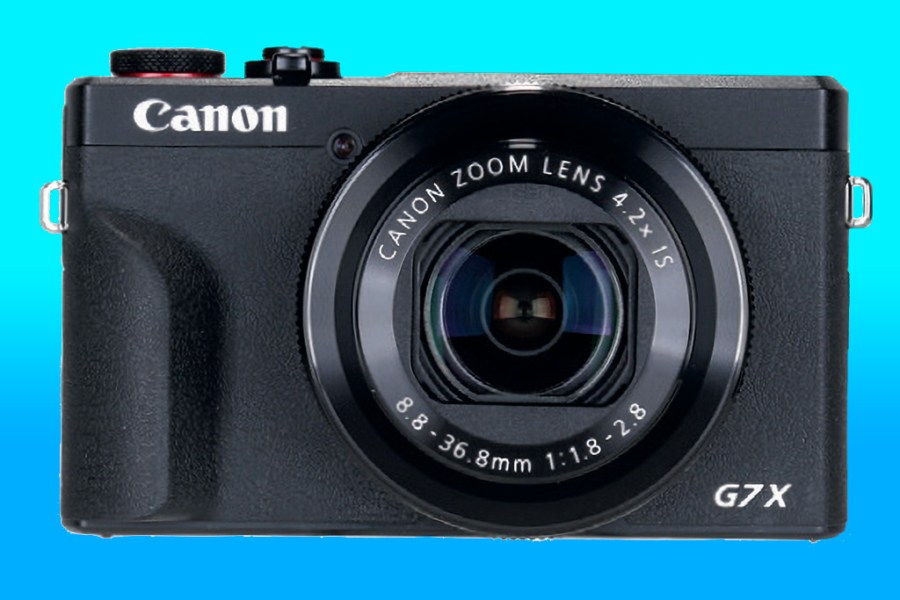Amateur Photographer verdict
The Canon PowerShot G7X Mark III is a lovely pocket camera that will give you more advanced control and better results than a smartphone.- Very good image quality
- Plenty of useful features
- Small, light and easily pocketable
- Capable of 4K video capture and YouTube live streaming
- Display can be hard to see clearly in bright sunlight
- Touchscreen could be fiddly for larger fingers
The PowerShot G7X Mark III sports a raft of powerful features in its pocket-friendly body and is one of the few remaining compact cameras that you can still buy on the second-hand market for around $749 / £699 (RRP), or less. Audley Jarvis tests how it performs and whether it’s still a good buy.
At a glance
- 24-100mm equiv f/1.8-2.8 lens – The G7X Mark III is equipped with a 4.2x optical zoom that employs 11 elements in 9 groups, including one double-sided aspherical lens, one single-sided aspherical UA lens, one single-sided aspherical lens and one UD lens. The zoom is controlled via a switch around the shutter button, but can also be moved in steps via the control ring.
- Image stabilisation – The G7X Mark III benefits from built-in image stabilisation that provides three stops of shutter speed compensation, which helps to keep your images sharp at slow shutter speeds.
- 4K video – 4K video footage can be recorded at up to 30fps for just under 10 minutes. In addition, it provides 1080p Full HD video capture at 25/50fps for just under half an hour of continuous footage, along with 720p HD at 50fps.
- Built-in ND filter – As with most G-series models, the G7X Mark III features a built-in three-stop ND filter that facilitates the use of either faster apertures or slower shutter speeds in bright conditions.
- Hi-Speed Raw – This new feature takes advantage of the G7 X Mark III’s electronic shutter to enable raw capture at an impressive 30fps for up to 70 frames. Images captured this way are stored as a stack, which you can browse in the Playback menu to select the ones you want.
- Exposure compensation – Located underneath the exposure mode dial on the top of the camera, the G7 X Mark III provides up to +/-3EV of exposure compensation for when you want to override the camera’s metering calculations to either brighten or darken the image.
- Bluetooth & Wi-Fi connectivity – In addition to built-in Wi-Fi, the G7X Mark III also provides Bluetooth connectivity to a paired smartphone via the Canon Camera Connect app. You can choose whether to transfer images at their original size or a reduced size

There were five models in Canon’s PowerShot G-series premium compact range when the G7X Mark III came out in 2019. The G7X Mark III slots in above the entry-level Canon G9X Mark II, but below the more stills-focused G5 X Mark II.
Above these sit the flagship Canon G1X Mark III and the rather dated Canon G3X from 2015. Currently, the G7X Mark III appears to be the only model still available.
The main thing that sets the G7X Mark III apart from the Canon G5X Mark II is that it lacks the pop-up electronic viewfinder. In addition, the G7X Mark III’s zoom range is slightly narrower at 24-100mm – compared to 24-120mm on the G5 X Mark II.
That said, the two cameras also have quite a lot in common: both are built around the same 20.1MP 1in stacked CMOS sensor and Digic 8 image processor, and both cameras share broadly similar styling, button layout and handling traits.
Features
At full resolution, the sensor records images in a native 3:2 aspect ratio, although you can opt to shoot in 4:3, 16:9 and 1:1, albeit at reduced resolution. In addition to JPEG capture, you can select from raw and Compressed raw (C-RAW). Native sensitivity ranges from ISO 125 to ISO 12,800, plus an expanded setting of ISO 25,600 is available.
The G7X Mark III is equipped with both a mechanical and an electronic shutter; the former gives you a shutter speed range of 1-1/2000sec, while the latter provides 30-1/25,600sec.
As with the G5 X Mark II you’ll need to use the mechanical shutter if you want to take advantage of the 20fps maximum continuous shooting speed, while the electronic shutter is automatically engaged when using the camera’s new 30fps Raw burst mode.
Built-in JPEG-processing tools and options include Canon’s usual array of Picture Styles, which comprises eight presets alongside three custom settings.

The G7X Mark III also comes equipped with Canon’s Auto Lighting Optimizer for boosting shadow detail, along with a Highlight Tone Priority tool, which aims to preserve highlight detail in tricky lighting conditions.
Exposure modes extend to the usual array of PASM settings for more advanced users, backed up by a fully Automatic mode and range of Scene modes for point-and-shoot duties.
Within these, you’ll find a Panoramic tool that allows you to pan the camera for ultra-wide-angle shots and an Automatic HDR mode that takes three consecutive images in one quick burst and blends them together.
Last but not least are a range of Creative Filter digital filter effects, which include old favourites such as Toy Camera, Miniature and Fisheye options, among others.
Body and Design
In terms of its general appearance, dimensions and weight, the G7X Mark III remains almost identical to the G7 X Mark II. It’s a small, sleek and attractive little compact that feels really nice in the hand, thanks largely to its textured rubberised coating. As with its predecessor, a raised finger grip and thumb-rest provide additional security against accidental drops.
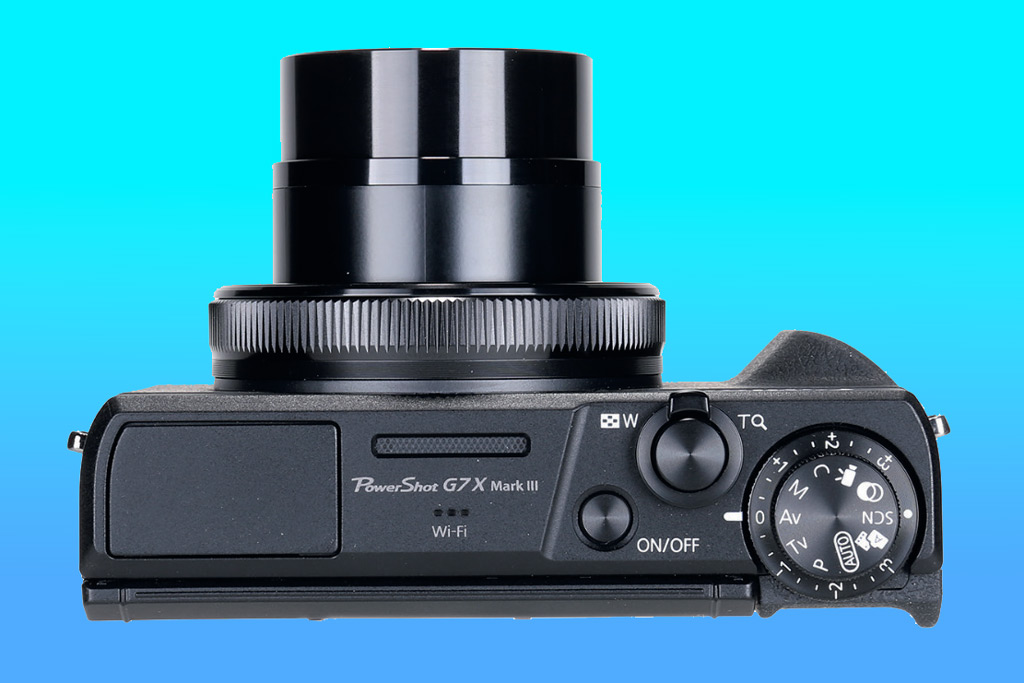
Despite its diminutive size, it weighs 304g with a card and battery, which gives it a surprising yet reassuring solid feel when held in the hand. You certainly wouldn’t want to drop it, though, so a strap is a must. On top of this, you might also want to consider fitting a decent screen protector in order to keep the touchscreen display free from scratches.
Given the camera’s diminutive size, buttons remain quite generously spaced and clearly labelled. As with its predecessor, it also features a control ring around the base of the lens that can be set to control a range of functions, although the options to set it up are a little buried within the in-camera menu.
By default, it will control either the aperture or shutter speed, depending on the exposure mode you’ve selected; however, you can also use it to adjust focus in manual focus mode or to control the zoom with incremental jumps through 24mm, 28mm, 35mm, 50mm, 85mm and 100mm with each click of the dial. Other options include ISO, EV compensation, WB and suchlike. However, I strongly suspect most users will use it to control aperture/shutter speed, or for manual focus, or to control the zoom, as this feels much more natural and intuitive.
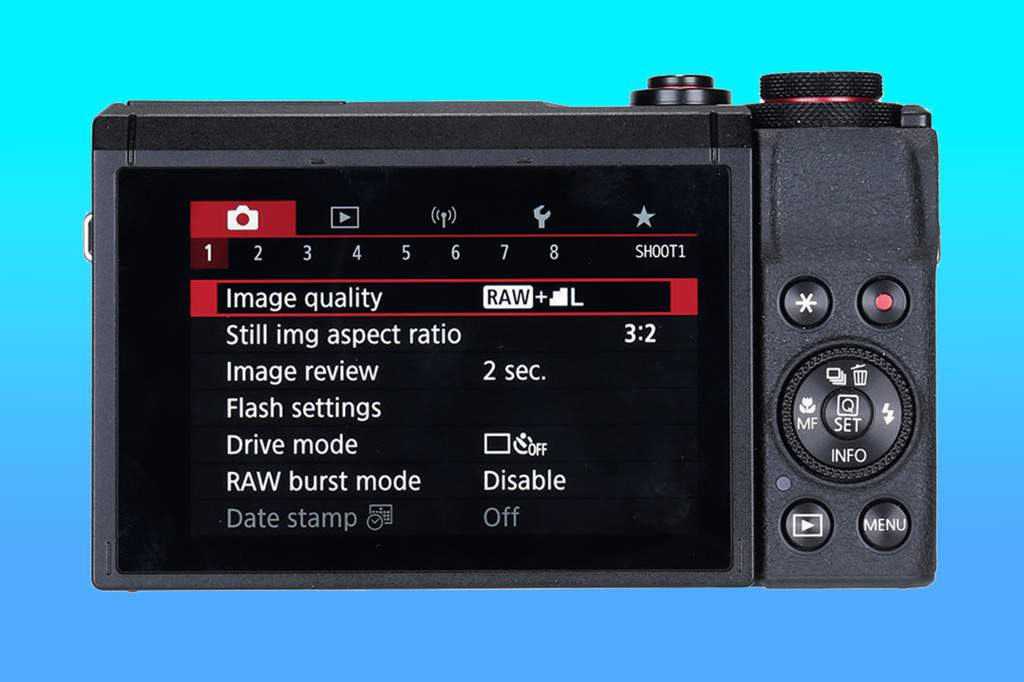
The 3in, 1.04-million-dot touchscreen on the back is both responsive and clearly signposted for easy navigation, although in bright sunlight I found that it can be slightly difficult to see clearly. In this respect at least, the built-in EVF of the G5 X Mark II has a clear advantage.
Pressing the ‘Q’ button either on the display or in the middle of the rear control dial calls up an intuitive menu that provides direct access to all of the camera’s key settings. From here, you can use either the d-pad or your fingertips to select and adjust the camera’s settings.
I favoured using my fingers, as this is more direct than the d-pad and speeds things up quite a bit, especially once you’re accustomed to the layout. Be aware that the on-screen selection boxes are quite small, though. While this didn’t cause me any particular issues, those with larger fingers could possibly find themselves inadvertently pressing the wrong bit of the screen from time to time.
Performance
While the addition of 4K movie recording might be the headline-grabbing new feature, the G7X Mark III also enjoys a notable boost in performance over its predecessor thanks to the addition of a Digic 8 image processor.
This is most notable in terms of the maximum burst speed, which has risen from 8fps to 20fps. This puts it into the same bracket as Sony’s RX100 VII premium compact, although at around £1,049 the RX100 VII is obviously quite a bit more expensive, making it more of a direct rival to the Canon G5 X Mark II. Like the G5 X Mark II, the RX100 VII also sports a pop-up electronic viewfinder.

Autofocus modes extend to a Face Detection + Tracking mode that will prioritise faces but can also be used to track moving subjects simply by selecting the desired point of focus on the touchscreen.
During testing, I must admit to being pretty impressed with the G7X Mark III’s tracking performance, with the camera delivering consistently sharp results when faced with moving subjects.

Other AF options include a moveable 1-point AF, which again is selected using the touchscreen along with a more precise Spot AF that provides a smaller focus box than One Point AF for more precision when required. Last but not least is a manual focus mode that can be activated via the control wheel at the base of the lens.
Shooting JPEGs, I was able to record 85 consecutive images in just under five seconds before the buffer filled. In raw, this dropped to approximately 48 images in just under three seconds, while in JPEG + raw capture, I also managed approximately 48 images in just under three seconds. Impressive figures!
Resolution
At ISO 160, JPEGs produce a figure just over 3,400l/ph, although with careful processing it’s possible to squeeze out up to 3,600l/ph from raw files. The clear message here is that if you want to extract as much detail as possible from the G7X Mark III, you’re better off shooting in raw and processing images yourself.
Noise
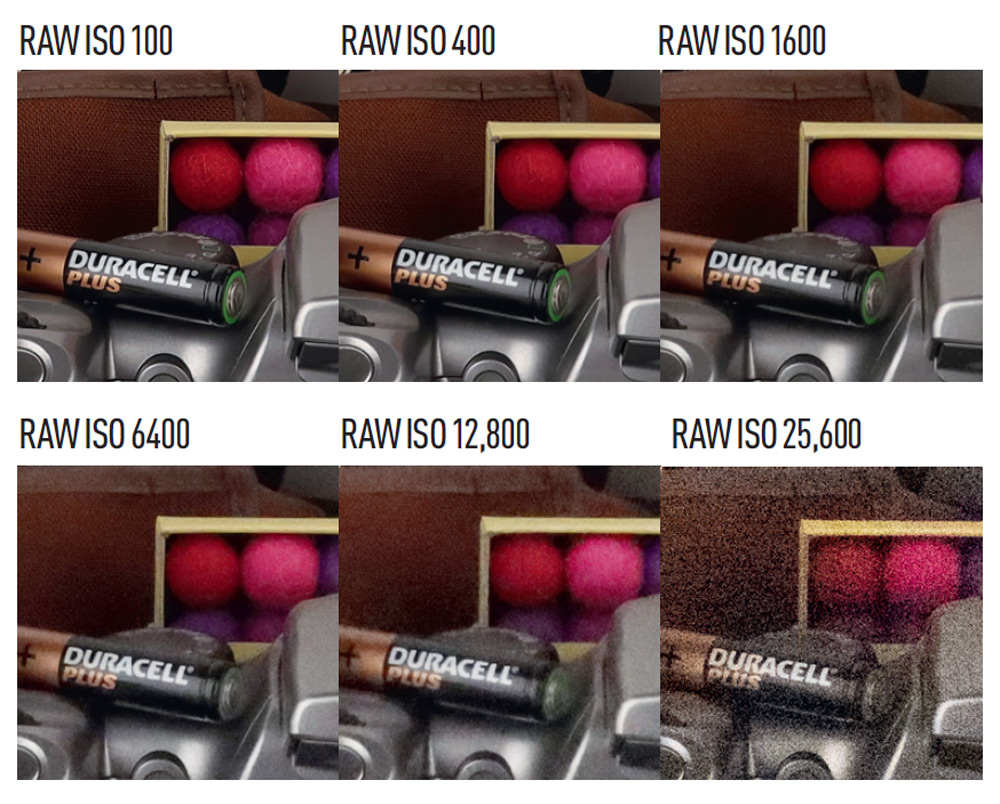
At ISO 125 and 200, JPEG and raw images are free of noise and display plenty of fine detail. At ISO 400 some slight loss of detail begins to occur when viewing images 1:1, although it really doesn’t impact the overall image quality. It’s only at ISO 1600 that noise starts to gets more noticeable. Beyond this point, noise will be much harder to ignore, even when viewing images at smaller sizes.
Verdict
The G7 X Mark III is a lovely pocket camera that I really enjoyed using. There’s plenty of scope to set the camera up via its various JPEG processing options to get exactly the look you want, while the ability to shoot raw also provides scope to process images yourself after the point of capture. Either way, it delivers on its promise of producing images of a notably higher quality than you could expect of a smartphone camera – even a high-end one.
While the addition of a built-in external microphone input alongside a flip-up LCD display, built-in YouTube live streaming and 4K movie-recording abilities mark the G7 X Mark III out as an excellent choice for those with an interest in online video blogging, the camera excels as a still image camera, too.
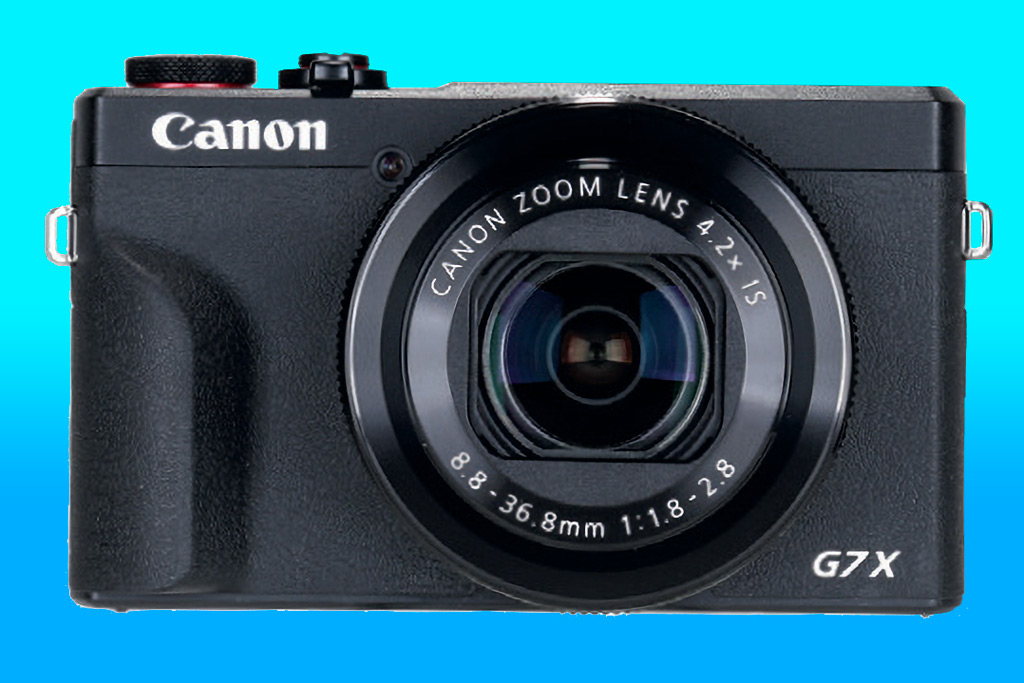
For those seeking something they can easily carry in their pocket that will give them more advanced controls and better results than a smartphone, the G7 X Mark III is a serious contender. I have no hesitation in recommending it purely on its own merits.

Specifications
| Sensor | 20.1MP CMOS, 13.2 x 8.8mm (1inch) |
| Lens | 24-100mm equiv, f/1.8-2.8 |
| Shutter speeds | 1-1/2000sec (mechanical), 30-1/25,600sec (electronic) |
| Sensitivity | ISO 125-12,800 standard, (ISO 25,600 expanded) |
| Exposure modes | PASM, Auto, 11x Creative Filters, 13x Scene, Custom |
| Metering | Evaluative, Centre-weighted average, Spot |
| Exposure comp | ±3EV in 1/3EV steps |
| Continuous shooting | 20fps in AF-S 8fps with continuous AF |
| Screen | 3in, 1.04-million-dot tiltable touchscreen LCD |
| AF points | 31 |
| Video | 4K (3840×2160), 30fps |
| External mic | 3.5mm stereo |
| Memory card | SD, SDHC, SDXC |
| Power | Rechargeable NB-13L Li-ion |
| Battery life | Approx 265 shots per charge |
| Dimensions | 105.5×60.9×41.4mm |
| Weight | 304g (with battery and card) |
Related reading:
- Canon EOS 250D/Rebel SL3 review – a DSLR with a charm
- 12 best second-hand classic compact cameras
- Ricoh GR

